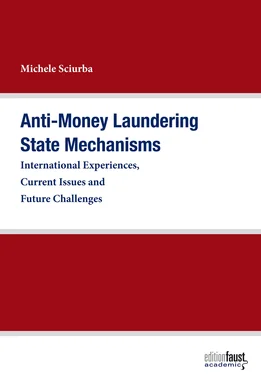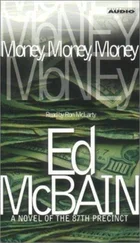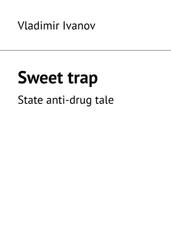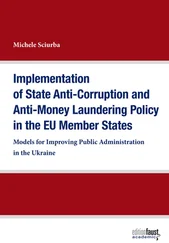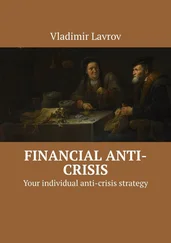II.3 The EU AML Regime’s Development Subsequent to the 4th AMLD in View of Future Regulatory Challenges
The 4th AMLD has a clear focus on tax crimes, includes violations concerning both direct and indirect taxes, and is in line with the revised FATF Recommendations of 2012. 78On a critical note, it is highly problematic that the member states’ definitions of tax offences differ significantly, as this lack of tax offence harmonisation demonstrates the ineffectiveness of the common approach to tax evasion within the EU. 79To illustrate this issue, tax evasion in Germany, in contrast to Holland, is not a predicate crime for money laundering. In Germany and Austria, tax evasion is not a serious crime in the respective penal code. On the basis of the principle of subsidiarity, tax offences cannot be classified as a serious crime and predicate offence for money laundering within the EU. 80
Directly after the GFC, the EU Commission Directorate-General for Home Affairs created the Economic and Legal Effectiveness of Anti-Money Laundering and Combating Terrorist Financing Policy (ECOLEF) project. ECOLEF has expressed their concern in one of its studies on the effectiveness of AML policy and possible shortcomings, because the implementation of the 4th AMLD has exceeded the envisioned two-year period in a number of member states. 81One reason for this delay is that the FATF Guidelines 2013 82, which are incorporated in the Directive, oblige states to carry out individual ML, TF and tax evasion related risk assessments, but neither describe how these assessments should be made nor define their methodology. As a consequence, each member state must first develop its own qualitative criteria to meet the requirements of implementation. This, in turn, highlights the absence of a harmonised risk assessment methodology, which ultimately compromises the ability to compare the results of the data collected in these assessments. 83
Since the GFC, the public has demanded that western governments take stronger action against tax abuse because of the immense costs of the global bank rescue. Protest movements, such as Occupy in New York, Frankfurt and London, especially criticised the invocation of the moral hazard principle and associated too-big-to-fail (TBTF) doctrine. Ultimately, the G8, the OECD and the EU have adopted policies of tax avoidance and evasion into the AML regimes. The FATF Recommendations of 2012 and the 4th AMLD take account of this new AML objective in comprehensive regulations. The Wolfsberg Group, an association of 11 leading banks, expanded the Wolfsberg Principles to include the prevention of tax evasion as a central AML objective. 84The publication of the “Panama Papers” brought the issues of money laundering and tax evasion prominently to public attention and once again accelerated the process to abolish tax havens in both the US and Europe. According to estimates of the US Internal Revenue Service, the US government loses an average of USD 458 billion as a result of tax evasion per year. 85Despite this amount, the new AML regimes have to be questioned carefully in a social and political sense, since under their rules, legal professionals such as lawyers, notaries or tax advisors are required to report their own clients to the authorities if they suspect a criminal activity. This duty, however, is diametrically opposed to the trust relationship of a lawyer, notary or tax advisor to the client. In addition, the lack of harmonisation in the methodological and qualitative approach to risk assessments raises doubts about the quality of a risk-based approach, as this lack causes substantial interpretation and implementation problems for companies and regulatory authorities. In particular, the international cooperation on tax evasion of the Egmont Group and the Financial Intelligence Units (FIUs) Europol and Interpol cannot justifiably prosecute tax evasion as a serious crime as long as the harmonisation of tax offences is not completed within the EU.
64N Moloney, E Ferran and J Payne, The Oxford Handbook of Financial Regulation (1st edn, OUP 2015) 144 ff.
65ibid 146.
66Committee on Payment and Settlement Systems, Technical Committee of the International Organization of Securities Commissions, ‘Principles for Financial Market Infrastructures’ (April 2012).
67N Moloney, E Ferran and J Payne, The Oxford Handbook of Financial Regulation (1st edn, OUP 2015) 243.
68P Hardouin, ‘The Aftermath of the Financial Crisis: Poor Compliance and New Risks for the Integrity of the Financial Sector’ (2011) Journal of Financial Crime 18(2) 149.
69Directive 2005/60/EC of the European Parliament and of the Council on the Prevention of the Use of the Financial System for the Purpose of Money Laundering and Terrorist Financing (3rd AMLD) [2005] OJ L 309/15.
70D Cox, Handbook of Anti-Money Laundering (1st edn, Wiley 2014) 62 f.
71P Hardouin, ‘The Aftermath of the Financial Crisis: Poor Compliance and New Risks for the Integrity of the Financial Sector’ (2011) Journal of Financial Crime 18(2) 150.
72G20 Working Group on Reinforcing International Cooperation and Promoting Integrity in Financial Markets (WG2), ‘Final Report’ (27 March 2009) 34 f.
73ibid 37 at [101].
74N Johannesen and G Zucman, ‘The End of Bank Secrecy? An Evaluation of the G20 Tax Haven Crackdown’ (2014) Economic Policy 6(1) 66.
75Directorate General for Internal Policies, ‘Offshore Activities and Money Laundering: Recent Findings and Challenges’ (March 2017) (IP/A/PANA/2016-4) (PE 595.371) 13.
76U.S. Department of the Treasury, Resource Center, ‘Foreign Account Tax Compliance Act (FATCA)’ < https://www.treasury.gov/resource-center/tax-policy/treaties/Pages/FATCA.aspx> accessed 16 September 2017.
77OECD Global Forum on Transparency and Exchange of Information for Tax Purposes, ‘Automatic Exchange of Financial Account Information Background Information Brief’ (Updated January 2016) 2 f.
78See 4th AMLD recital 4.
79Directorate General for Internal Policies, ‘Offshore Activities and Money Laundering: Recent Findings and Challenges’ (March 2017) (IP/A/PANA/2016-4) (PE 595.371) 34.
80ibid 35.
81D Cox, Handbook of Anti-Money Laundering (1st edn, Wiley 2014) 76.
82FATF, ‘FATF Guidance: National Money Laundering and Terrorist Financing Risk Assessment’ (February 2013).
83Directorate General for Internal Policies, ‘Offshore Activities and Money Laundering: Recent Findings and Challenges’ (March 2017) (IP/A/PANA/2016-4) (PE 595.371) 37.
84B El Nakib, ‘Trade-Based-Money-Laundering New guidance from Wolfsberg Group’ ( Compliance Alert , 3 February 2017) < http://calert.info/details.php?id=1490> accessed 16 September 2017.
85C Matthews, ‘Here’s How Much Tax Cheats Cost the U.S. Government a Year’ ( Fortune , 29 April 2016) < http://fortune.com/2016/04/29/tax-evasion-cost/> accessed 16 September 2017.
Конец ознакомительного фрагмента.
Текст предоставлен ООО «ЛитРес».
Прочитайте эту книгу целиком, купив полную легальную версию на ЛитРес.
Безопасно оплатить книгу можно банковской картой Visa, MasterCard, Maestro, со счета мобильного телефона, с платежного терминала, в салоне МТС или Связной, через PayPal, WebMoney, Яндекс.Деньги, QIWI Кошелек, бонусными картами или другим удобным Вам способом.
